The fourth quarter has a massive impact on your agency’s fortunes. Head into the end of the year with confidence by following the tips in this blog post.
The fourth and final quarter is crucial if you’re an agency.
This is the period when businesses spend big to meet their year-end holiday goals. You’ll likely make the bulk of your profits in this quarter.
This year, the fourth quarter is more important than ever. After the tumultuousness of the pandemic, you need a big win to end the year on a high note.
You also have to answer some tough questions about the future of your business. The pandemic has upturned agency models and changed the way people work. What kind of agency you’ll be in the long run will depend on the path you decide to take this quarter.
As we step into October, there are a number of steps you need to take to prepare for the final quarter.
I’ll cover all these preparatory steps in this post. You’ll learn:
- The four questions you need to ask as you head into the final quarter
- The key financial metrics you should know to be well prepared for Q4 and beyond
- How to identify your top talent and help them improve their skills
- The key operational issues you need to iron out for Q4
Four Questions for the Fourth Quarter
For most consumer-focused businesses, the fourth quarter is a period of record sales and profits. Buoyed by the holiday season as well as shopping-focused events (Thanksgiving, Black Friday), it’s not unusual to find businesses making a third of their income in this quarter alone.
Case in point: Apple’s fourth quarter earnings (shared in Q1) are usually 30-35% of its annual earnings.
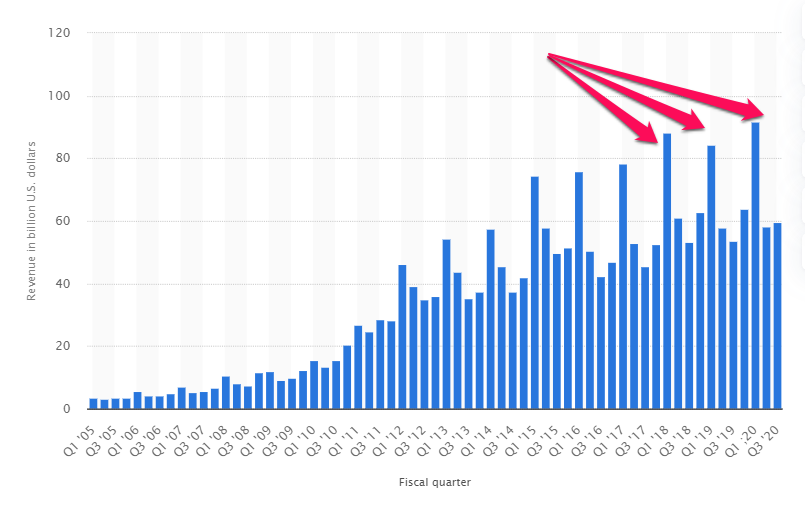
(Image source: Statista)
This holds true for agencies as well - as clients spend more on marketing, your profits usually go up at the end of the year.
But the final quarter isn’t just a time to book profits; it’s also a time to chart the long-term direction of your business. From figuring out the kind of clients you want to attract to analyzing your financial health, everything starts in the fourth quarter.
This year, things have been a little different. Lockdowns and slow demand earlier in the year mean that there is tremendous pressure on businesses - including yours - to make up in the final quarter.
There’s also the fact that the pandemic has fundamentally changed long-held ideas about the agency business.
As you march into October, there are four crucial questions you need to ask yourself:
- How is my agency faring financially?
- Are my personnel prepared and trained to meet the coming challenges?
- Is my organization well-drilled to manage resources, develop relationships, and land new clients?
- Where do I see my agency in 2, 5, and 10 years? What pandemic-induced changes should we retain? What should we discard?
Finding clear, honest answers to these questions is crucial if you want to be prepared for this quarter and beyond.
Let’s dive into each of these issues in more detail.
Assess Your Financial Health
It’s customary to spend the last quarter taking stock of your agency’s finances.
After all, you can’t figure out how much you can spend next year if you don’t know how much you earned the previous year.
The pandemic has made this assessment a little more complicated. You can’t really project future financials based on this year’s performance. So many pandemic-induced changes might just be temporary (such as shutting down offices in favor of remote work).
Keeping this in mind, there are a few things you need to consider in your financial health assessment:
1. Cash reserves and cash flow
As the earlier half of this year showed, you can never have too much cash in hand. In times of uncertainty, strong cash reserves give you room to maneuver.
The other side of cash reserves is cash flow. Strong cash flow makes for strong businesses. If your payments are regularly delayed beyond the normal payment terms (Net 30/45/90), you need to find new clients.
Here are some issues you need to consider in your assessment:
- Months of cash reserves: Target at least 60-90 days of expenses. More is better, but don’t get too conservative. Cash should be used to grow the business, not just act as a safety net.
- Monthly cash flow: Tracking the cash coming in each month, as well as the change in cash flow on a monthly basis.
- Payment delays by project and client: Some sectors have been more impacted by COVID than others. If clients or projects from a particular sector are constantly late on payments, it’s a good indication to focus on biz dev outside this sector.
2. 60-20-20 rule
I take it that you already know your agency’s gross income (AGI). For the uninitiated, AGI is:

Keep in mind that any contractors or 1099 workers you hire for billable client work should be counted under COGS. This will give you a true picture of your AGI.
A key point of contention this year is expenses/overheads. Since a lot of agencies have partially or completely closed their offices, fixed expenses have come down drastically. If this drop in expenses hasn’t impacted your productivity (we’ll cover this later), you can count it as a big win.
On the whole, your goal should be to follow the 60-20-20 rule, where:
- 55-60% of your revenues cover salaries (including contractors/freelancers)
- 20-25% of revenues cover overheads/expenses
- The remaining 20% is your profit before taxes
The last 20% profit figure might have been impacted by the pandemic. How much you’ve been impacted - and how much you have to make up next year - will be defined by the total dip in profits.
If you’ve gone from the ideal 20% to 15% in profits, you’re doing fine. But if your profit has dropped to 5% or even lower, you have your work cut out for next year.
3. Profit by project, client
As you plan your agency’s moves for the next 12 months, you need to know what kind of clients, industries, and projects to target. If clients from a particular sector are constantly unprofitable (especially after the pandemic), it might be a good idea to pursue another sector.
The best way to get this data is to track profitability for each project and client.
In Workamajig, for instance, you can get a detailed overview of profits by project…
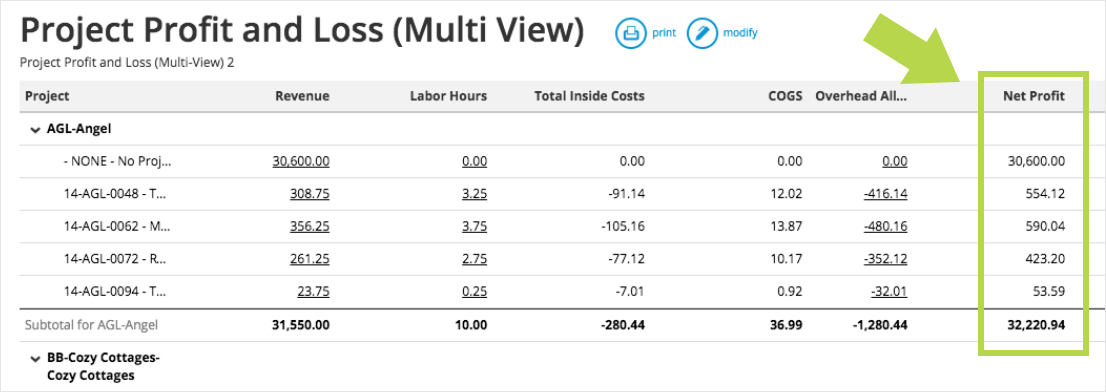
...and by client:
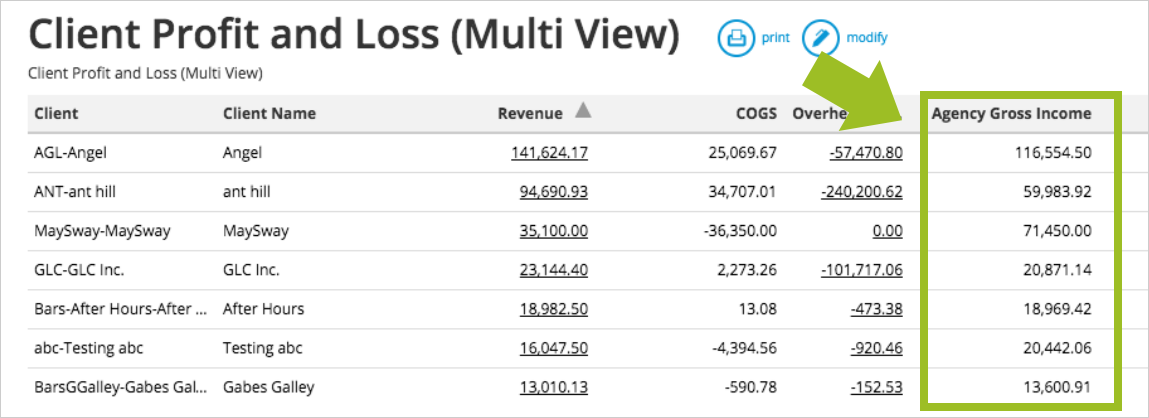
This can help you figure out what kind of clients and projects to pursue in the coming year.
Invest in Your People
What does it take to thrive in the post-pandemic world?
People.
While talent has always been important for agencies, in the post-pandemic always-online world, it is more important than ever.
A brick and mortar agency could hope to corner its local market simply by being there. But that advantage doesn’t hold true anymore.
As you prepare for the fourth quarter and the coming years, you need two core ingredients to succeed:
- People with strong skills
- The ability to extract value from these skills
In simpler words: you need to step-up your learning, and you need to max-out your utilization rate.
1. Step up your learning
The post-pandemic, remote-okay world is all about A players. If clients have access to talent from across the world, why would they work with anyone but the best?
It’s time to help your B players be A players, and A-tier talent to be A+.
Start by organizing your talent pool. Categorize them by their skill level, experience, core skill, and knowledge area or specialization, like this:
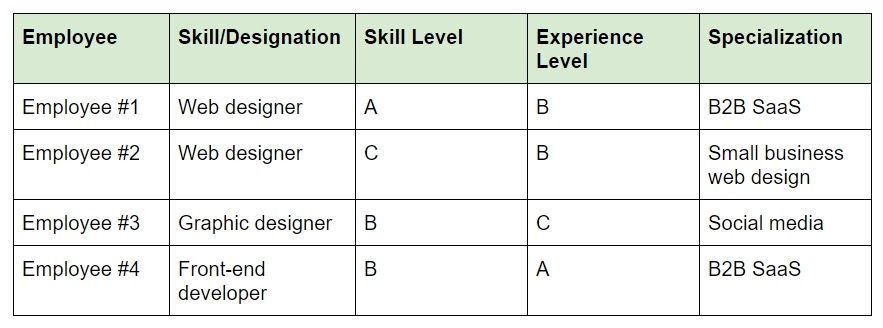
Be honest in your assessment. It’ll not only help you build a better agency, but also help your employees become better.
Your focus should be on your A and B players. Ask yourself: what does it take for these employees to become better? What kind of learning program will help them improve their skills?
While this is by no means absolute, the general trend for learning goes like this:
- Detailed workshops: For your top A and B players to help them develop cross-domain skills.
- Conferences: For your best talent (A-tier) to help them learn from industry leaders.
- Seminars: For your B-tier talent to help them develop their core skills further.
- Courses (online/offline): For your B and C-tier talent to help them polish their basic skills, or pick up a new one
- Mentorships: For your A, B-tier talent to help them learn from trusted experts
I recommend setting aside a monthly budget just for learning. Don’t treat it as an expense - it’s an investment in your agency’s future. More skilled employees don’t just help you compete better, they also command a higher billing rate.
2. Make better use of your resources
Top-tier talent is no good if you can’t bill for it.
Your top priority going into the fourth quarter, thus, should be to improve your core personnel-related metrics, especially utilization rate and realization rate.
Utilization rate is the raw measure of the percentage of hours worked out of all available hours for a resource.

Realization rate, on the other hand, is the percentage of billable hours out of all available billable hours:

For example, a resource might have 1,000 total available hours. Out of these, she spends 100 hours in learning or administrative tasks. Thus, she has a total of 900 billable hours.
If you bill 600 hours of this resource’s time, your realization rate would be 66.6%.
These two metrics are crucial for understanding whether you’re doing a good job of putting your talent to work. A realization rate of 60% or more should be your target. Ideally, you should aim for 70-80%.
So while helping your people learn more is important, it is even more important to put them to work. A 10% difference in realization rate for a $100/hr resource can translate into tens of thousands of extra revenue.
Refer to this article to learn more about utilization rate.
We make Workamajig, the all-in-one project management suite built for creative teams
- Everything in one place
- Project Management
- Resourcing & Scheduling
- Custom Dashboards
- Business Insights
- Task Management & Time Tracking
Streamline Your Operations
2020 has thrown quite a few curve balls as far as agency operations go, hasn’t it?
You might have started the year as a local brick and mortar agency. By the end of the year, you’re at least remote-friendly, if not remote-only.
A lot of agencies discovered that outdated tech and Excel sheets don’t really work when you’re working remotely.
As you step into the fourth quarter, it’s time to take stock of your operations. Do you have the tech foundations to build a post-pandemic agency? If you were to go remote-only, do you have adequate tracking to keep projects on track?
To be specific, there are a few core issues you need to address:
1. Communication
In the absence of a physical workspace, you have to rely entirely on online communication. If you’re still doing this over email or a project-agnostic solution like Slack, you’re missing a few tricks.
For starters, if there’s an issue with a deliverable, you want the discussion localized within the deliverable, not leaking out on a hard-to-find Slack channel conversation.
In Workamajig, for instance, you can add comments for each deliverable. This ensures that all project-related conversations remain localized in one easy-to-find spot.
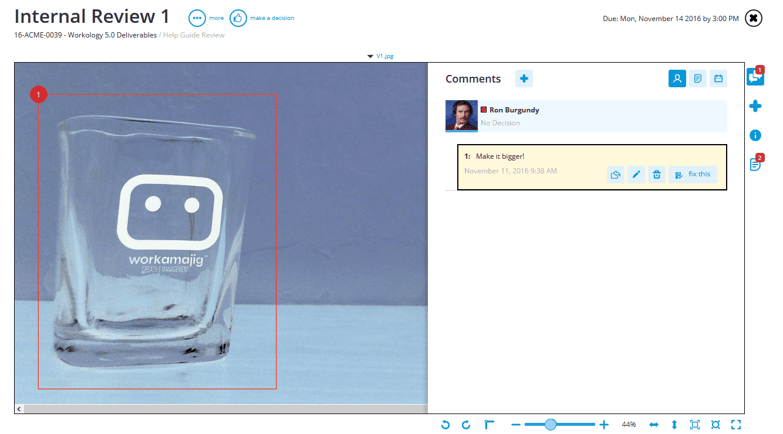
Workamajig's review tool lets stakeholders discuss deliverables before and after delivery
This applies to agency-client communication as well. Instead of gathering feedback/approvals over Skype/Zoom/email, you can localize everything on a single platform.
This ensures that all communication remains accessible and trackable at all times.
2. Tracking
In a virtual/remote-friendly agency, time tracking is more important than ever. You can’t optimize your operations if you don’t even know what your people are doing.
Track everything - hours worked on each task, budget used/remaining for each project, incoming deals, profitability, pending payments, etc.
The time when agencies could focus solely on being creative is over. You have to track data as diligently as a tech company if you want to thrive in the post-pandemic world.
As you step into the fourth quarter, make sure that you have the infrastructure in place to collect and track data to make better decisions.
Chart Your Agency’s Future Path
The toughest decisions you have to take right now aren’t about Q4 2020; they’re about the years to come.
Right now, no one can really say how the future might pan out. Maybe remote-friendly will go mainstream. Or maybe people will get tired of staring at screens all day and go back to physical offices.
We’ve already seen reports of “work from home fatigue” setting in, causing a drop in productivity. This makes earlier predictions of remote-only being the norm a little too rosy.
As an agency, you have to ask yourself: where do you see yourself in five, ten, even 20 years?
Do you intend to be a brick and mortar agency serving local clients? Or do you want to go remote only and serve a global client base? If it’s the latter, what sacrifices in productivity, morale, and general well-being are you willing to make?
It’s also clear that some sectors will shrink in the post-pandemic world. Travel will rebound, but it might take years to do so. Same with live events.
If such sectors form a big chunk of your agency’s revenues, you need to ask: is my current positioning sustainable? If not, what similar but growing sectors can I target?
There are no easy answers to these questions. Much depends on how the coming few months shape up. Even more, depends on the kind of agency you want to build.
One thing is certain: to succeed in Q4 - and beyond - you need to start today.
Start off the new quarter on the right footing with better agency management systems. Workamajig can help you bring all your operations under one roof, giving you unprecedented insight into your business.

